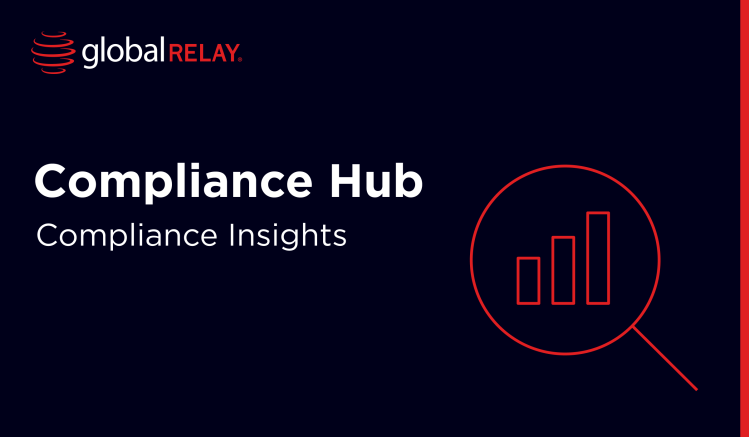
Streamlining compliance with policy automation in 2025
Manually conducting compliance processes is eating up valuable hours, and the risks of missing a beat have never been higher. Discover how compliance policy automation (CPA) is transforming the way organizations can ensure regulatory adherence, and how AI is powering these solutions.
Written by a human
In brief:
- Compliance policy automation slashes manual workload and reduces costly errors associated with non-compliance
- AI compliance policy management tools help firms keep pace with ever-changing regulations
- Automated compliance enforcement ensures consistent, reliable policy adherence across all communication channels, helping organizations mitigate non-compliance risks
The heavy toll of manual policy enforcement in 2025
In 2025, compliance teams are spending an increasing amount of time, often dozens of hours each week, on manual policy checks to ensure compliance.
Diverse business communications, including emails, instant messages, social media, and other digital means of communicating, mean that Compliance, Legal, and IT teams have an overwhelming volume of data to review for compliance policy adherence.
With regulations growing more intricate, the process of enforcing compliance policies has become more arduous. Not only are these processes time-consuming, they’re also prone to human error.
Manual methods of policy compliance not only strain resources but also leave firms vulnerable. That’s because it’s easy for an employee to miss a vital piece of data that can be evidence of a violation, and organizations are far too aware that violations can lead to severe penalties and other sanctions.
So, what’s the answer to this problem?
Compliance policy automation offers a smarter way forward by streamlining regulatory adherence using the power of AI. Digital compliance tools including AI analytics benefit individual employees and the wider organization in many ways.
What is compliance policy automation (CPA) and why does it matter?
Compliance policy automation, sometimes abbreviated to CPA, uses advanced AI and other digital tools to automatically enforce predefined regulatory policies and compliance procedures.
In practical terms, this means that AI can be used to flag non-compliant communications in real-time, ensure proper data retention, and provide a consistent approach to policy enforcement across the board. This streamlined approach has multiple benefits for regulated organizations, which we’ll cover later in this article.
But it’s important to note that in sectors like financial and legal services where regulatory compliance is stringent and heavily enforced, automated compliance enforcement solutions are quickly becoming an essential part of the compliance framework.
Unsurprisingly, industry trends show a surge in adoption of regulatory policy automation, with more firms investing in specialist compliance automation tools to manage compliance risks and boost the efficiency of their compliance efforts.
The pitfalls of manual policy enforcement
Relying on manual oversight for policy enforcement is a risky proposition, but one that organizations have historically been forced to do.
Compliance teams have to sift through vast amounts of data across multiple channels, making it nearly impossible to guarantee consistent application of rules. As data volumes continue to grow, so does the chance of missing something critical. The consequences of manual errors can be severe, ranging from regulatory fines to reputational damage.
With the rise of AI-enabled tools and other powerful digital solutions, automated compliance enforcement addresses these challenges head-on. Automated policy enforcement through AI-powered solutions offers organizations reliable and robust mechanisms for managing policies at scale without the burden of manually performing such tasks.
The benefits of compliance policy automation
Adopting compliance policy automation delivers several benefits to organizations, including:
- Consistency: Automated systems ensure that regulatory policies are applied uniformly, reducing the risk of oversight associated with people carrying out policy enforcement checks.
- Efficiency: AI-enabled compliance management tools like archiving minimize the need for manual work and give you deep insight into your data quickly. Solutions including next-gen cloud archiving and AI-enabled eDiscovery allow organizations to leverage their data using powerful tools. This means teams can focus on more strategic initiatives and improved resource allocation, leading to better business outcomes.
- Scalability: As regulatory demands and data volumes grow, automated compliance enforcement solutions can adapt quickly without sacrificing accuracy. The best solutions on the market can scale with your business, and this is more efficient compared to hiring new employees to do the work, which is time-consuming and costly.
- Proactive risk management: AI compliance policy management tools can identify potential issues before they escalate. Powerful analytics provide actionable insights and intelligently identify risk. This helps firms avoid investigations and other issues which can lead to costly penalties and other sanctions.
- Trusted data: Reliable policy enforcement gives organizations peace of mind that their data can be trusted, and provides a complete, accurate, and timely view of the business. This enables leaders and teams to make informed decisions based on facts, contributing towards operational efficiency and productivity.
Why compliance policy automation is essential in 2025
With regulatory compliance requirements within the finance and IT sectors increasing, mean many organizations struggling to keep up, the need for efficient, reliable policy enforcement has never been greater.
The ability to apply data access, governance, and privacy policies automatically, without human intervention enables organizations to work smarter, which is crucial in today’s fast-moving environment.
Final thoughts
Regulatory policy automation presents an efficient, robust, and future-proof solution for organizations that want to accelerate their compliance strategy, keep pace with their competitors, and reduce risk.
Embracing automated compliance enforcement and leveraging AI compliance management tools for tasks such as data management and legal hold requests is just a step away. Learn more about Global Relay’s next-gen cloud archiving and how we can support your automation strategy.
